
Interesting Graph - RIPE DB Objects
• 1 min read
This graph shows how the number of various RIPE Database objects evolved over time, in particular domain, intenum, route and aut_num objects.

Articles
Likes on articles

For many years I have been the leader of the Research and Development team at the RIPE NCC leading a dedicated team of thinkers to support the RIPE community by providing network research, data analysis and prototype tool development and services including RIPE Atlas and RIPEstat. As of 2023, I'm working as a principal engineer in order to assist the CTO and the RIPE NCC's information services.

• 1 min read
This graph shows how the number of various RIPE Database objects evolved over time, in particular domain, intenum, route and aut_num objects.

• 1 min read
This graph shows the number of IPv6 allocations received since 2007 when the RIPE NCC started to allocate IPv6 address space.

• 1 min read
Related to a thread on the NANOG mailing list about "BGP hijack from 23724 -> 4134 China?", we checked if any of those prefixes originated in the RIPE NCC service region.

• 5 min read
On 30 January 2010 the RIR system reached a small milestone: on this day APNIC has surpassed the RIPE NCC in terms of total allocated/assigned IPv4 address space, as seen in the RIR stats files. On this occasion we decided to look a bit into how IPv4 allocation/assignment rates changed over the las…

• 3 min read
After the Resource Explainer REX has been available for four weeks, we looked at the usage statistics collected by the tool to get a better ide how useful this tool could be for the wider community.

• 3 min read
While walking around the hallways at RIPE59, a couple of people asked me how the movies were made, what tools did I use and such. So here's a short summary on what I did to produce these movies.


• 4 min read
The current version (v0.1) knows only about IPv4 address space. We went for the most difficult part first. ASNs and IPv6 address space will follow (please note the follow-up articles below describing additional functionality about the Resource Explainer).

• 4 min read
INRDB is a non-conventional database hosting many different, number resource related data sets.

• 3 min read
Let us show you the RIR assigned and allocated IPv4 space, and some indication on how that's routed in the Internet. Get out the popcorn! Satisfaction guaranteed!

• 7 min read
With a limited supply of hardware probes and thousands of networks yet to be covered, how do we prioritise the applications to host probes? In this article, we explain our hardware probe distribution strategy to improve RIPE Atlas’s global coverage.
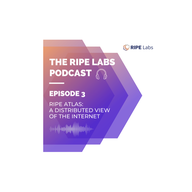
• 2 min read
Twelve years ago the RIPE NCC set out to build the largest Internet measurement network ever made. Today, RIPE Atlas provides users with an unprecedented understanding of the state of the Internet in real time. In this episode, I catch up with Robert Kisteleki to talk about how RIPE Atlas developed…
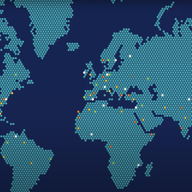
• 6 min read
When it comes to RIPE Atlas, bigger is better. Each new probe adds another vantage point, bringing the measurement platform closer to its goal of providing an unprecedented view of the state of the Internet. But expansion into new geographical locations and networks wouldn't be possible without the…
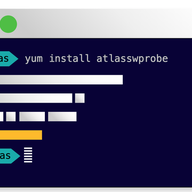
• 5 min read
Software probes provide yet another way to help grow the RIPE Atlas network. As many new hosts opt for this alternative, getting RIPE Atlas into new places means helping people install and run the relevant software packages. Language support will be key to this, and we have a plan to provide it, bu…

• 6 min read
This year's Internet Measurement Conference (IMC) was held in London from 1 - 3 November. In this article we highlight some of the presented work that we think is interesting and that the RIPE community might find useful.
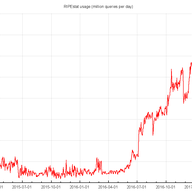
• 11 min read
Please find below the third part of our technical services update. This time we're focusing on our research activities and a number of tools we are developing.
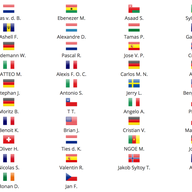
• 11 min read
In 2013 and 2015 we provided high-level reports on the status of our plans for our technical services and tools. It is time for an update. In this first article we will focus on RIPE Atlas.

• 7 min read
We're thinking about implementing WiFi measurements in RIPE Atlas, and we want to know what you think. There are several different ways we could do this - find out more below and then take our poll to make your voice heard!
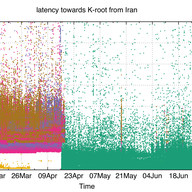
• 11 min read
Dyn Research published an article on K-root recently. Here we would like to augment the picture with data from RIPE Atlas in order to provide a more complete picture of the effect of the K-root node in Iran.
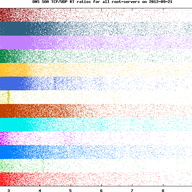
• 8 min read
We did some measurements on the round-trip (RT) values of DNS queries for SOA (Start of Authority) records from our RIPE Atlas probes, over both UDP and TCP. We plotted the TCP/UDP ratios on graphs, and found that, as expected, for the majority of the measurements, it is around 2. However, we also …
“Hi, I am the project manager of the zonemaster (zonemaster.net) dns validation tool (https://github.com/zonemaster/zonemaster/blob/master/README.md). This open source tool is developed by Afnic (the French registry) and IIS (the Swedish registry). This tool is used by RIPE to validate the reverse IP address in the RIPE database. IMHO, it is the best available tool for DNS zone validation (everything open (BSD-2 licence for source code and Creative Commons Attribution 4.0 International License for the documentation) and with extensive documentation of all its modules and test cases) and it used by many well known DNS registries and registrars. My question is - will it be possible to integrate Zonemaster source code to verify a domain 's zone from different vantage points from RIPE root anchors? If you have any feedback to provide, please contact me at sandoche.balakrichenan@afnic.fr”
It's not entirely clear if you want to add RIPE Atlas support to zonemaster (then you can simply call APIs and integrate results that come back) or the other way around (adding zonemaster code to anchors -- which is much harder to do due to differences in working models).
“That is a rather powerful VM (the TL-MR3020 probes has 32MB ram and a Atheros AR9331@400MHz). Do the VM need to be so powerful? I would love to participate with a probe, if I could run a probe on my (weak) Intel Atom server, either as a VM or in some sort of container (systemd-nspawn/docker?). I will be more than happy to experiment if I could get access to the anchor.ks file (fell free to mail me at firstname@lastname.dk).”
There's need for more resources for an anchor than for a probe. It has services on it, for example. About probe VMs: we're looking into the possibility to introduce "software probes" deployable as a software package or such. We'll report back on this activity when we have more information.
“Given the proliferation of cheap single board computers such as the Raspberry Pi and/or most organisations having a virtualization platform of some sort, wouldn't the development of one or more images for these platforms be a better solution than tying the organisation to a single hardware vendor?”
Besides working with the above mentioned hardware, we're talking to other vendors to see what they can offer. One constraint is that we want to avoid using fully repurposeable hardware (like the Raspberry Pi) -- we fear that too many would be taken as "free hardware". We're also looking into virtual solutions: a VM anchor pilot is already ongoing. We will likely work more in this space.
“Hello, Is it possible to use INRDB and how? I need to search if an Internet prefix was announced on the Internet between 2012 and 2013, by which AS, for how long etc. Can you please help me?”
Hi, you should check out RIPEstat, specifically the routing history widget: https://stat.ripe.net/widget/routing-history#w.resource=193.0.0.0%2F21
“I also wonder whether the type of person hosting a probe has changed over time. At first it may have been more engaged "enthusiasts" who were personally keen to have a probe and ensure it remain connected. Later participants may have agreed to host a probe based on encouragement from an ambassador, but they don't really care as much or notice when their probe has disconnected.”
Indeed, this is a likely cause. However, it's difficult to measure such an effect.
Showing 15 comment(s)